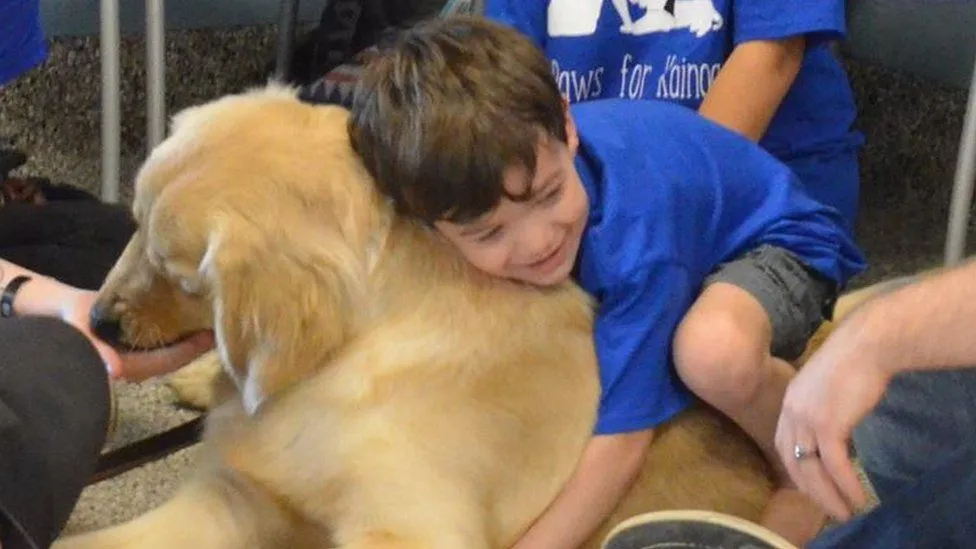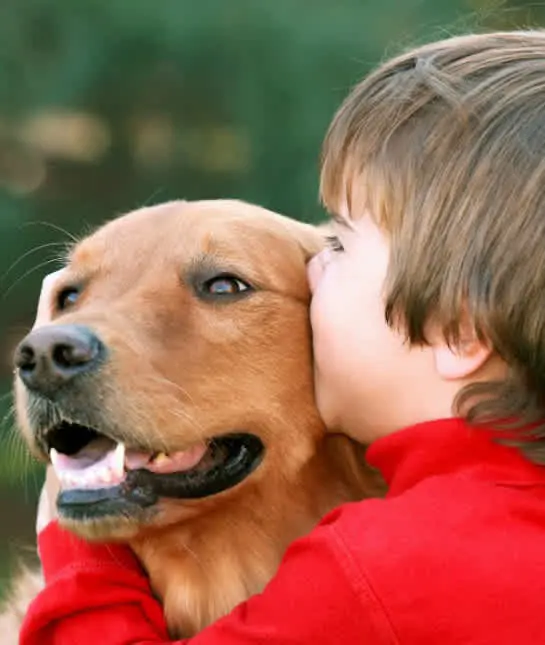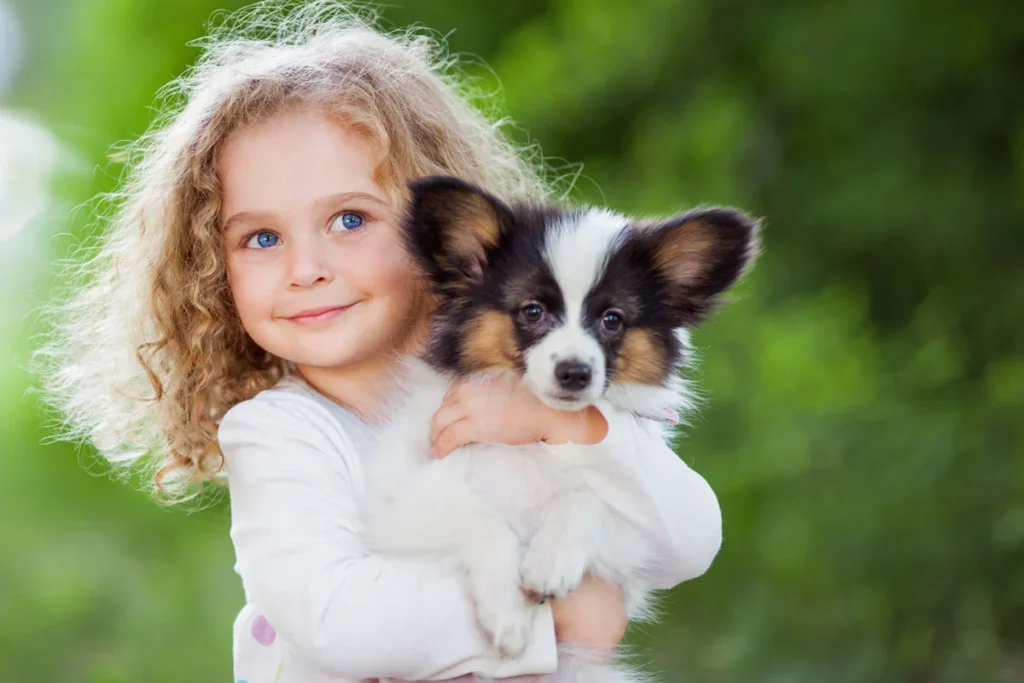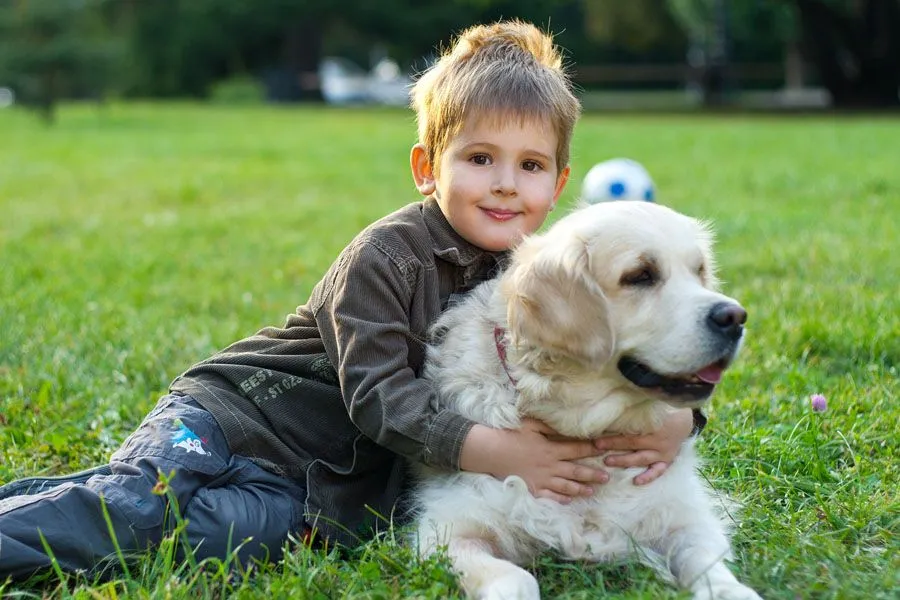Unraveling the Mystery: Can Dogs Really Have Autism?
Introduction
Can dogs revel in a circumstance akin to human autism?
This intriguing query has captivated the eye of both puppy owners and the clinical community in recent years.
As we delve into the tangled web of canine behavior and neurodiversity.
We find a fascinating realm wherein the similarities among man’s best friend and our personal neurological variety may additionally preserve profound implications.
Unraveling the Mystery: Can Dogs Really Have Autism? Explore the signs, symptoms and facts behind canine autism.
Can Dogs Have Autism? Exploring the Possibility

Autism spectrum disorder (ASD) in humans is characterized by demanding situations in social interplay and verbal exchange. In addition to the presence of restricted repetitive behaviors and sensory sensitivities. Remarkably researchers have found strikingly similar behaviors in positive dogs. Leading some to hypothesize that a canine equal of autism may also certainly exist.
One of the hallmarks of autism in humans is trouble with social cues and interaction. A few dogs showcase a reluctance to engage with their proprietors or different animals who prefer to stay in their very own solitary worlds. Those puppies might also warfare to interpret the nuanced frame language and vocalizations of their canine opposite numbers. Often displaying confusion or maybe worry in social conditions.
In socially demanding situations autistic individuals regularly display severe fixations on unique gadgets or activities. This pattern of behavior has also been located in dogs who might also turn out to be obsessively focused on a specific toy or routine to the exclusion of all else. These repetitive behaviors coupled with a resistance to alternating are strikingly just like the signs seen in human autism.
Sensory sensitivities are a not unusual function of autism with people regularly experiencing heightened or faded responses to stimuli inclusive of sound, contact or light. Anecdotal reports advocate that a few dogs show off comparable sensitivities. Reacting with misery or withdrawal to sure environmental triggers.
The Debate Around Canine Autism

In spite of the obvious parallels the concept of “dog autism” remains a subject of ongoing debate and controversy. At the same time as some researchers and veterinarians agree that the proof is compelling enough to warrant an additional investigation. Others continue to be skeptical, arguing that the observed behaviors may be resulting from different factors inclusive of education, genetics or environmental impacts.
One of the primary demanding situations in this debate is the lack of a standardized diagnostic framework for identifying autism like trends in canine. Unlike the set up criteria used to diagnose autism in people there are not any universally typical evaluation tools or diagnostic criteria particularly tailored to puppies. This makes it incredibly difficult to determine whether or not a dog’s behavior surely displays a neurological circumstance comparable to human autism.
Challenges in Diagnosing Autism in Dogs

The subjective nature of behavioral commentary in addition complicates the manner of appropriately identifying and diagnosing autism like developments in canine. Canine owners and veterinarians may interpret a canine’s behavior via the lens of their very own experiences and biases. Main to inconsistencies and potential misinterpretations.
The complex interplay of genetics, surroundings and personal temperament can all make a contribution to a canine’s behavior. Making it hard to isolate the precise factors that can be indicative of an autism like condition. Without the ability to depend on goal biomarkers or neuroimaging strategies the project of differentiating among “regular” dog conduct and ability autism like traits becomes an onerous challenge.
Similarities and Differences with Human Autism

Dogs may also share some tendencies with human beings who have autism spectrum disorder. Like autistic people a few dogs battle with social interaction preferring to be alone. They may additionally have severe fixations on certain objects or exercises and be touchy to noises or textures. These behaviors are much like the repetitive behaviors and sensory sensitivities seen in human autism. Diagnosing autism in dogs is tough due to the fact they can not verbalize their reports and there are no standardized evaluation tools for canine autism. The parallels are interesting extra research is needed to decide if dogs can certainly have a neurological circumstance corresponding to human autism. Information about any similarities and variations ought to offer insights into both dog and human neurodiversity.
Implications and the Need for Further Research

The capacity implications of recognizing and knowledge of canine autism are profound. If this type of circumstance were to be officially recounted it may cause the development of specialized schooling and support programs to better meet the wishes of affected dogs. Deeper information of the neurological similarities and differences between people and man’s best friend should provide valuable insights into the human situation. Doubtlessly informing our approach to autism research and therapy.
Regardless of the challenges there may be a growing call for expanded studies and collaboration between veterinary specialists and autism professionals. By pooling their collective know how and sources scientists may find the elusive solutions that have to date eluded the hunt to resolve the mystery of canine autism.
Signs and Symptoms of Canine Autism

Social Interaction Difficulties:
- Appear aloof or indifferent to social interactions with people and other animals
- Avoid physical contact and prefer to be alone
- Lack of interest in playing interactive games
- Difficulty interpreting and responding appropriately to social cues like body language and vocalizations
Rigid, Repetitive Behaviors:
- Develop intense fixations on specific toys, objects or activities
- Engage in repetitive movements or behaviors like pacing or spinning
- Become highly distressed by any disruptions to their normal routines or environments
- Resist changes to their schedule, surroundings or preferred items
Sensory Sensitivities:
- Overreact to certain sounds such as loud noises or high pitched tones
- Display fear or anxiety around specific textures, surfaces or materials
- Avoid environments with bright lights, strong smells or crowded spaces
- Show discomfort with being petted or handled in certain ways
Other Potential Characteristics:
- Apparent lack of empathy or difficulty reading human emotions
- Narrow range of interests and play behaviors
- Unusual communication patterns like barking less frequently
- Possible motor skill delays or coordination issues
It is critical to notice that these behaviors can have more than one capacity reasons in dogs and autism remains a complicated and poorly understood condition even in human beings. Careful assessment through veterinary specialists is needed to decide if a dog can be at the autism spectrum. Research remains to set up reliable diagnostic criteria for canine autism.
Potential Causes of Canine Autism

Genetic Factors
The improvement of autism like developments in dogs is thought to have a genetic thing just like the function of genetics in human autism. Positive gene versions might also make a few dogs more susceptible to showing behaviors associated with the autism spectrum.
Environmental Influences
Further to genetic predispositions environmental elements experienced throughout a dog’s improvement can also make contributions to the emergence of autism spectrum behaviors. Such things as infection, harm or exposure to sure materials may want to probably cause the onset of those developments.
Veterinary Assessment and Evaluation

Diagnosing Autism in Dogs
It is very tough to recognize if a canine has autism. Vets don’t have preferred exams to test for it like they do in humans. Instead vets must cautiously observe a dog’s behavior and look for signs and symptoms that fit what is seen in human autism like trouble socializing and rigid routines. This method takes time and the vet has to rule out other viable motives for the canine’s conduct. Even then vets can’t say for certain if a canine has autism. Greater research is needed to develop better ways to assess autism in our 4 legged friends.
Supporting Dogs with Autism

Establish Routines
Dogs with autism like behaviors do best with predictable daily routines. Stick to a consistent schedule for feeding, walks, playtime etc.
Minimize Stress
Reduce exposure to loud noises, bright lights, crowded places and other environmental triggers that may cause the dog distress.
Encourage Comfort Items
Allow the dog to have favorite toys, blankets or other “comfort objects” that provide familiarity and security.
Tailor Training
Use positive reinforcement training methods go at the dog’s pace and avoid overwhelming them with too many new commands at once.
Provide Quiet Time
Make sure the dog has access to a safe peaceful space to retreat to when feeling overstimulated or anxious.
Ongoing Support
Work closely with a vet to monitor the dog’s behavior and make adjustments as needed to accommodate their unique needs.
The aim is to create a peaceful dependent surroundings that facilitates managing the dog’s autism like symptoms and allows them to thrive. Persistence and a custom designed technique are key.
Case Study: Buddy the Autistic Dog
One of the maximum well documented cases of a dog displaying behavior constant with autism is Buddy, a rescue dog from Canada. Buddy’s story has captivated the eye of both the clinical community and the public. Dropping light on the potential existence of a dog equivalent to the human condition.
Buddy’s owner, Jasmine, first observed his ordinary behaviors shortly after adopting him. The dog appeared to battle with social interaction, often avoiding eye contact and preferring to stay in his personal area. He also displayed an excessive fixation on a specific squeaky toy. Sporting it with him everywhere and becoming distressed if it was taken away.
As Jasmine delved deeper into Buddy’s conduct she found that he additionally exhibited sensory sensitivities, reacting negatively to loud noises and certain textures. This mixture of social demanding situations, repetitive behaviors and sensory problems led Jasmine to suspect that Buddy might be at the autism spectrum.
Keen to recognize her dog’s circumstance Jasmine reached out to animal behaviorists and veterinary experts. Who has been intrigued by Buddy’s case. Through substantial observation and assessment they concluded that Buddy’s behavior became indeed consistent with the defining characteristics of autism in people. Leading them to carefully label him because the first formally diagnosed “autistic dog.”
Even Buddy’s case isn’t always but universally regularly occurring via the clinical network. It has sparked a renewed interest within the exploration of dog autism and the ability implications it is able to preserve for each veterinary and human clinical research.
FAQ’s
Can “autism like” behaviors in dogs be treated?
Sure many “autism like” behaviors in dogs can be handled with education and behavior amendment strategies. For example if a canine engages in repetitive behaviors including tail chasing or pacing a behaviorist may also propose redirecting the canine’s interest to a toy or treat.
Is it possible for a dog to outgrow “autism like” behaviors?
Yes it is feasible for a canine’s conduct to exchange over time with right education and socialization. But it is crucial to be aware that a few puppies may keep exhibiting positive behaviors at some point of their lives.
How can you tell if a dog has autism?
Repetitive behaviors, difficulty engaging with other dogs and sensory sensitivities.
Are dogs autism friendly?
Dogs can be very beneficial to children with autism.
Conclusion
The question of whether dogs can virtually revel in a form of autism corresponding to the human circumstance remains a charming and unresolved enigma.
As we preserve our ability to have a look at, examine and deepen our knowledge of dog conduct the possibility of recognizing a canine equivalent of autism will become an interesting street for further exploration.
Whether or not this type of situation is formally mentioned placing similarities among the behaviors of a few dogs.
The defining traits of autism in humans serve as a poignant reminder of the great complexity and diversity which could exist in the animal country.
As we delve deeper into this fascinating realm we may additionally simply discover insights which have the power to convert our understanding of each canine and human neurodiversity.







